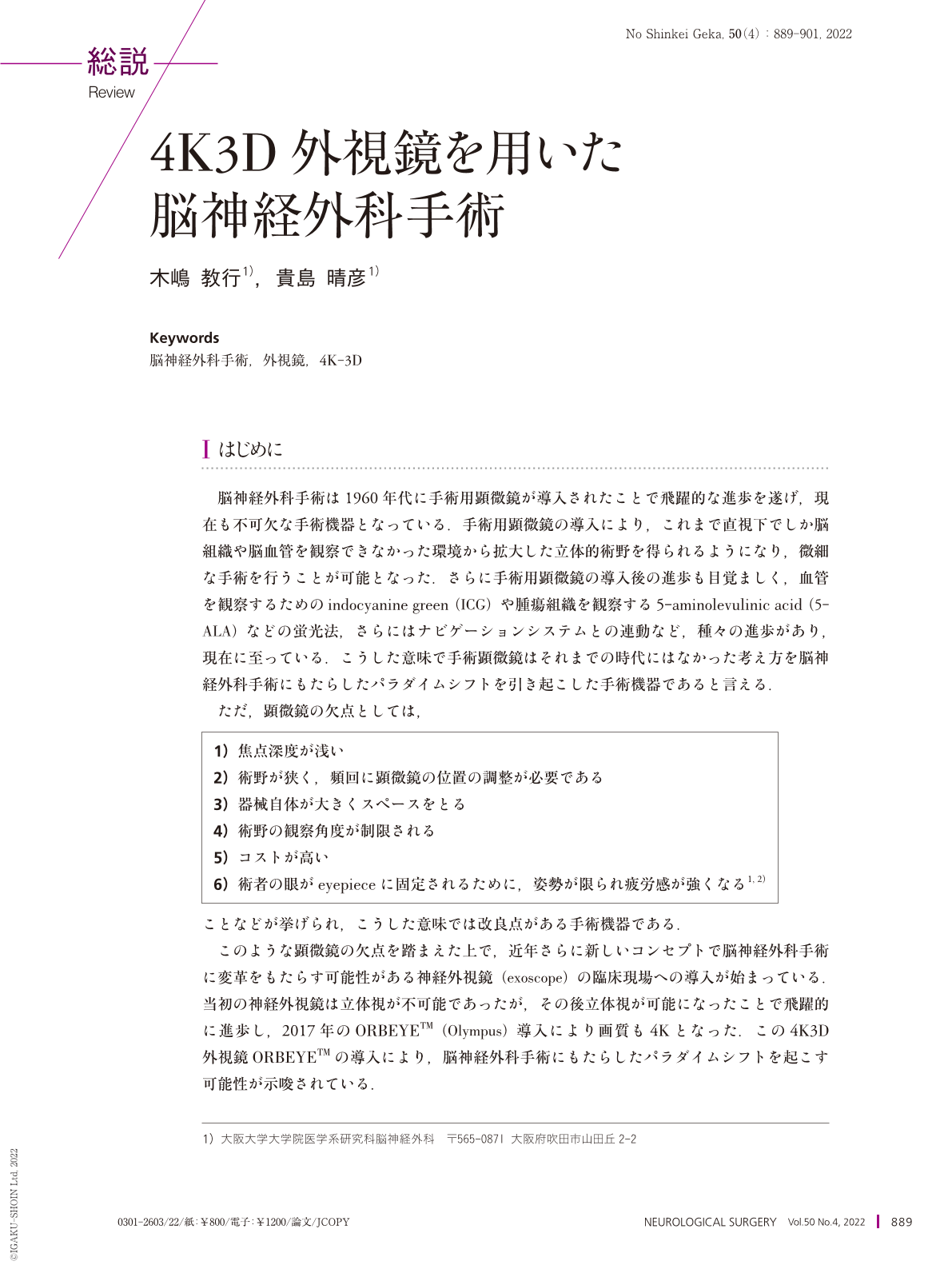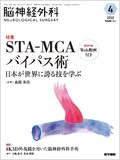Japanese
English
- 有料閲覧
- Abstract 文献概要
- 1ページ目 Look Inside
- 参考文献 Reference
Ⅰ はじめに
脳神経外科手術は1960年代に手術用顕微鏡が導入されたことで飛躍的な進歩を遂げ,現在も不可欠な手術機器となっている.手術用顕微鏡の導入により,これまで直視下でしか脳組織や脳血管を観察できなかった環境から拡大した立体的術野を得られるようになり,微細な手術を行うことが可能となった.さらに手術用顕微鏡の導入後の進歩も目覚ましく,血管を観察するためのindocyanine green(ICG)や腫瘍組織を観察する5-aminolevulinic acid(5-ALA)などの蛍光法,さらにはナビゲーションシステムとの連動など,種々の進歩があり,現在に至っている.こうした意味で手術顕微鏡はそれまでの時代にはなかった考え方を脳神経外科手術にもたらしたパラダイムシフトを引き起こした手術機器であると言える.
ただ,顕微鏡の欠点としては,
1)焦点深度が浅い
2)術野が狭く,頻回に顕微鏡の位置の調整が必要である
3)器械自体が大きくスペースをとる
4)術野の観察角度が制限される
5)コストが高い
6)術者の眼がeyepieceに固定されるために,姿勢が限られ疲労感が強くなる1, 2)
ことなどが挙げられ,こうした意味では改良点がある手術機器である.
このような顕微鏡の欠点を踏まえた上で,近年さらに新しいコンセプトで脳神経外科手術に変革をもたらす可能性がある神経外視鏡(exoscope)の臨床現場への導入が始まっている.当初の神経外視鏡は立体視が不可能であったが,その後立体視が可能になったことで飛躍的に進歩し,2017年のORBEYETM(Olympus)導入により画質も4Kとなった.この4K3D外視鏡ORBEYETMの導入により,脳神経外科手術にもたらしたパラダイムシフトを起こす可能性が示唆されている.
本総説では,①4K3D神経外視鏡の特徴,②手術用顕微鏡に対する4K3D神経外視鏡の利点,③4K3D神経外視鏡の手術への応用,④4K3D神経外視鏡の人間工学的な利点,⑤4K3D神経外視鏡の手術教育への応用の可能性などを中心に述べる.
The operating microscope has been an essential tool in neurosurgery since the late 1960s and continues to be a critically important tool for neurosurgical procedures. However, it may be accompanied by flaws since the neurosurgeon's position during surgery is limited. A newly developed surgical microscope, ORBEYETM(OLYMPUS, Tokyo, Japan), was launched to overcome the shortcomings of the operative microscope and offers 4 K, high-quality, and three-dimensional(3D)imaging. ORBEYETM offers similar visual fidelity but superior ergonomics and educational benefits compared with those of the operating microscope. Exoscopic surgeries maintain the same safety profiles as those using operative microscopes and have the potential to allow neurosurgeons to generalize neurosurgical procedures, which are considered difficult due to the neurosurgeon's awkward positions. This study summarizes the utility of the 4K 3D exoscope, ORBEYETM, and presents our experiences with its use in neurosurgical procedures.

Copyright © 2022, Igaku-Shoin Ltd. All rights reserved.


